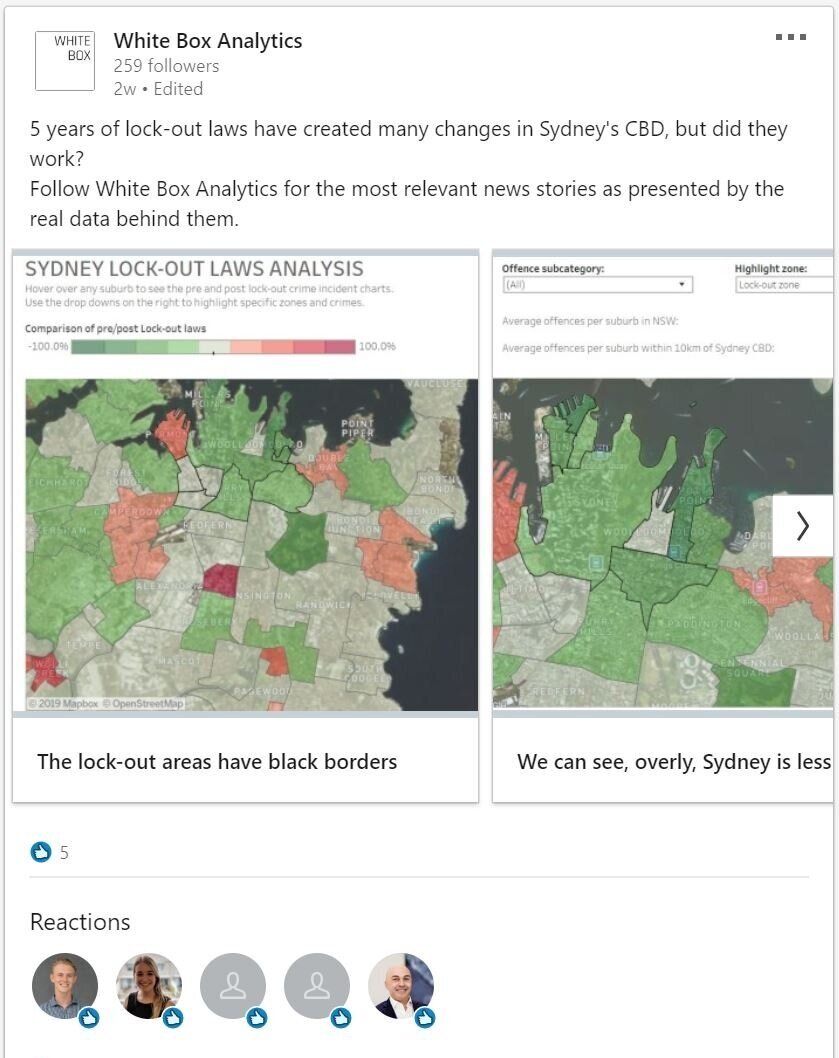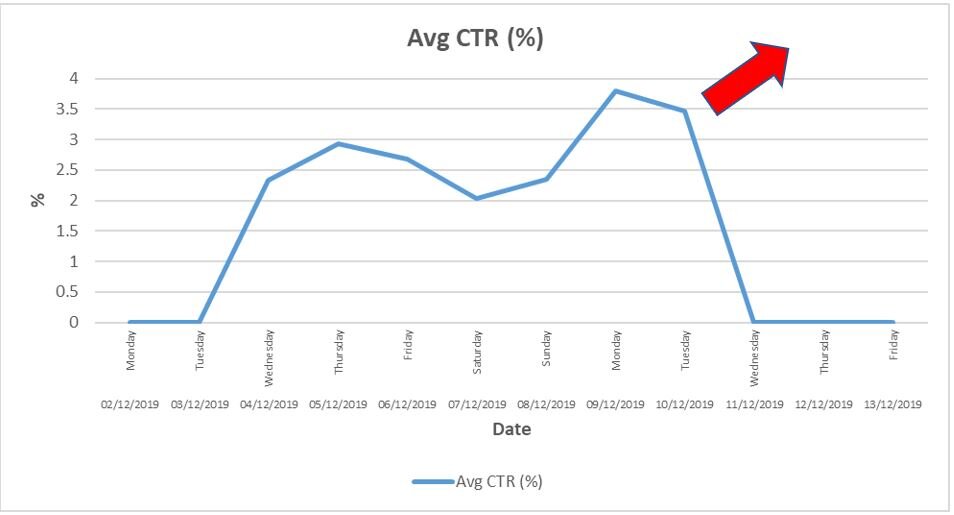How to run a LinkedIn Advertising Campaign - Our Experience
Upon our completion of the Sydney Lock-Out Laws impact analysis, we decided the findings would probably be of interest to more than just our immediate page followers. So we thought what better way to share our insights with the greater Sydney population than to run a LinkedIn Advertising campaign to get exposure for the findings, to encourage engagement with the outcomes of the laws, and to ultimately test the waters with the advertising platform to see just how sticky LinkedIn advertising really is.
Objective of the campaign
Our objective for this campaign was to build a broader following for the White Box brand across Australia (with a focus on the Sydney market).
How we did it
We created an easily digestible info-mercial of our key findings of our analysis piece which complimented LinkedIn’s formatting/feed styles and gave people the choice to engage with the story in their own way.
What we did
The campaign budget was spread over a 10 day period and launched on Tuesday 3rd December, following the mayhem that was the Black Friday and Cyber Monday weekend sales.
As the period included non-business days of Saturday 7th and Sunday 8th December, we allocated the daily budget limits to an amount slightly greater than the total budget divided by the number of days it would be active, with the intention to let LinkedIn role out the ad more to groups who were engaging and to not limit this engagement (too much) as a result of the budget. We’ll discuss the outcome of this strategy below.
The LinkedIn Campaign Manager - Objectives and Audience
LinkedIn, supposedly, is the ‘stickiest’ platform for ads in terms of engagement for a number of reasons including and definitely not limited to:
compared to Facebook and Instagram, its users are far more likely to keep their employment details up-to-date, meaning targeting specific businesses or job titles is far more accurate
like Facebook and Google, you can add insight tags to better capture target audiences and those who have engaged with your ad and website to refine future targeting efforts
LinkedIn is a professional network with users inherently more aligned with our business and its offerings than users interacting on purely social platforms
Prior concerns, issues and thoughts surrounding the campaign
For this campaign, our main aims were not to ‘sell’, ‘convert’, or any of the other key buzz words you’d expect to see when reading a post on advertising. This is because we first want to find an audience that values our brand and business solutions, rather than push sales messages into the open and hope something sticks.
As such, we used the ad as a way to engage the wider Sydney professional network in order to establish industries, businesses and people who are more likely in our target market and (hopefully!) more willing to engage in with our business and content.
The live campaign featured a carousel of images walking the audience through the analysis and its core findings
Analysis of Results
There was a lot to take away from this campaign, and overly, we believe it was successful. It could definitely however use further tweaking and optimisation - we’ll discuss all of these factors now.
Overly, the campaign reached a large audience and increased our follower count by over 35%. Although we didn’t have a specific number of followers we were aiming for this time around, based on the budget and the amount of exposure we received from the campaign, this acts as a great basis point for future campaigns whilst allowing us to understand the capabilities of LinkedIn ad campaigns.
A shortcoming of the LinkedIn campaign manager however does exist for analysing these metrics, and that is that it doesn’t seem to be great at determining and reporting which followers were gained through the ad, and which were organic. Hopefully this will be fixed in due time.
Secondly, as you have probably now noticed in the above graphs, the campaign didn’t receive clicks on the launch date, or for the final three days we had intended. We put this down to two reasons:
it takes a bit of time for the campaign to find and get pushed out by LinkedIn into the feeds of the target market
If LinkedIn find target markets who are engaging with the content on any specific day, they will continue to push it until the budget for that day is exhausted - hence our budget allocation strategy we discussed earlier was flawed as LinkedIn found enough people each day to exhaust the daily spend limit.
Despite the campaign being live for a shorter period than we intended, there were other wins gained!
Interestingly, aside from the days of the weekend, the average click through rate increased from approximately 2.3% on the first day of audience engagement, to 3.8% at its highest point.
This suggests that as campaigns spend more time live, LinkedIn get better at finding appropriate audiences which are more likely to engage with your content. As these audiences are saved in your campaign history for future use, this is definitely a win in our books!
Now the question remains, with more ad spend and/or a longer time period for tuning, could we achieve an even higher Click Through Rate? As we move deeper into the marketing funnel, our targeting will definitely need to be more refined, but this campaign has definitely been a great tester to see the potential that lies on the LinkedIn platform.
We’d love to hear your thoughts about LinkedIn advertising as well as the Sydney lock-out laws. To join the discussion, find us on LinkedIn.




